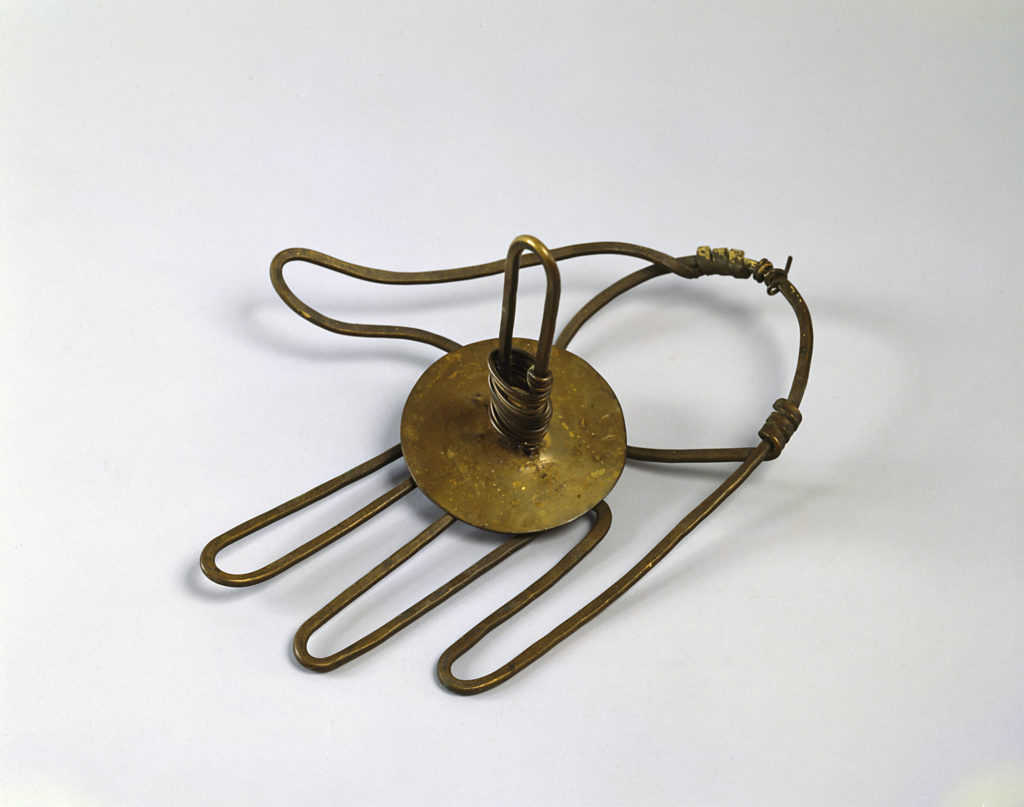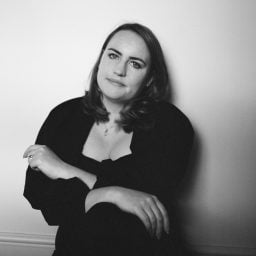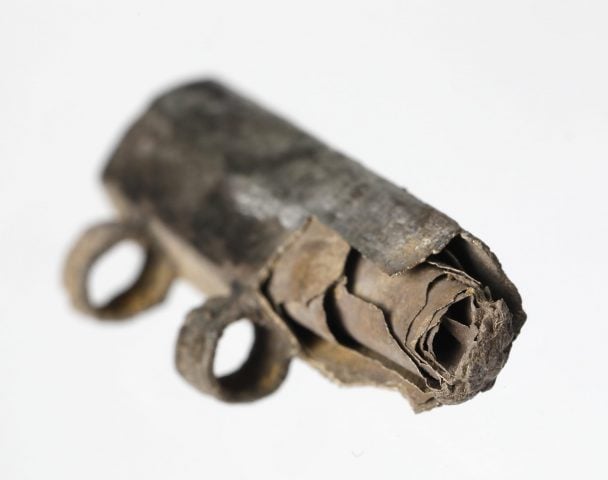In 1933, Alexander Calder began to transform a rundown farmhouse in Roxbury, Connecticut, into a family home which he shared with his wife Louisa and growing family and kept until the end of his life. You get a sense of the setting at Hauser & Wirth’s newest exhibition in Somerset in the South West of England, a site that was also built up from the once disused Durslade Farm into a series of galleries in the middle of 1,000 acres of working farmland.
Organized in collaboration with the Calder Foundation, “Alexander Calder: From the Stony River to the Sky,” will open to the public May 26 through September 9 at Hauser & Wirth Somerset. Sandy Rower, the artist’s grandson and president of the Calder Foundation, tells artnet News that the show came about during Frieze week in October of last year, when he visited the space with Iwan Wirth and it reminded him of a barn his grandfather used to store artworks in France.
“I walked into the space, and was so impressed by this little barn that has been so loved and yet is still authentic,” Rower says, adding that he could really picture a red Calder mobile in the space. “It was very little time to put together a show,” he admits, “but I was really inspired in going through the second gallery, because it’s a really intimate space and I saw that space as having a kind of definition of the way the Calders lived in Connecticut; the spirit of originality and authenticity, with all the handmade things and the way they lived.”
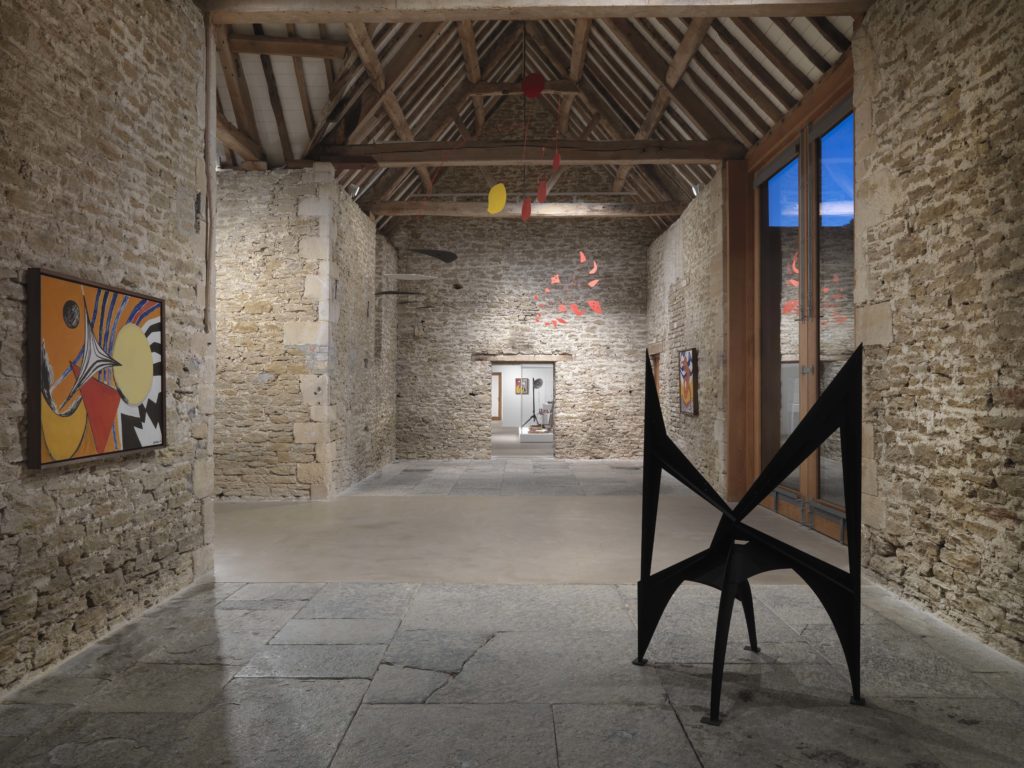
Installation view “Alexander Calder. From the Stony River to the Sky” Hauser & Wirth Somerset 2018. Photo by Ken Adlard, © 2018 Calder Foundation, New York / DACS London.
Alice Workman, the senior director of the gallery, hopes 50,000 people will come and see the show during its three month run. Outside, six stabiles and a standing mobile are on view, among them Calder’s Polygons on Triangles (1963) in the gallery’s garden, which was landscaped by Piet Oudolf, the Dutch designer of the High Line garden in New York. In the inner five galleries, almost 90 of Calder’s works dating from the ’30s to the ’70s are on view, including oil paintings made in the ’40s and ’50s.
The stars of the show, however, are a series of fascinating domestic objects from Calder’s Roxbury farmhouse, many of which have never been exhibited before.
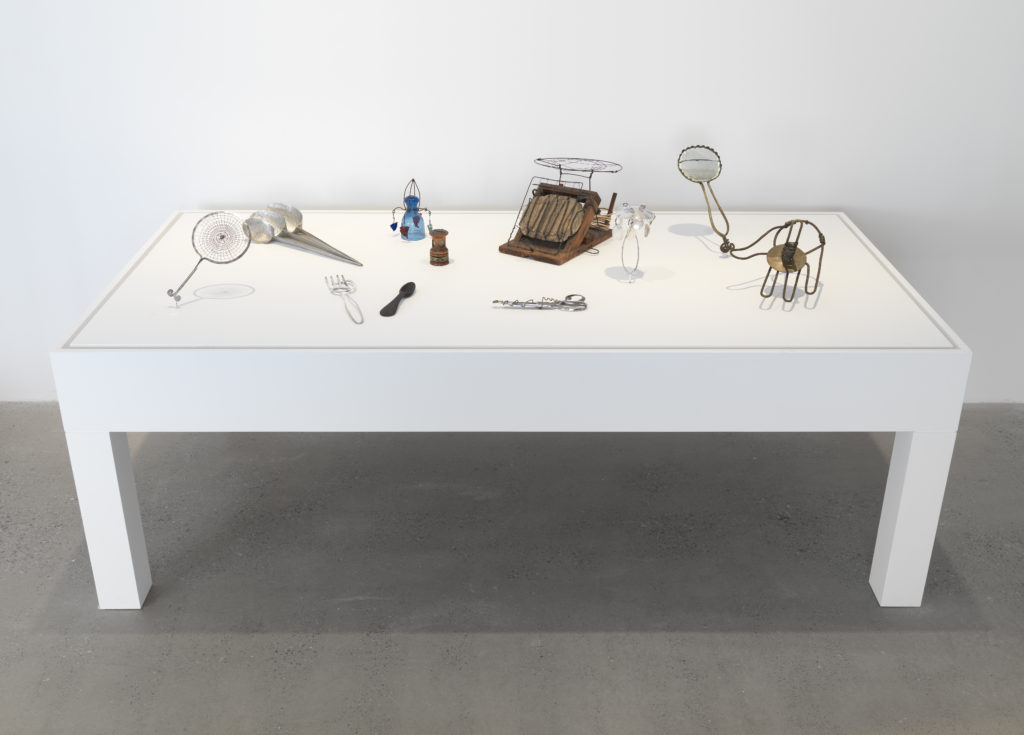
Installation view “Alexander Calder. From the Stony River to the Sky” Hauser & Wirth Somerset 2018. Photo by Ken Adlard, © 2018 Calder Foundation, New York / DACS London.
Walking through the exhibition, Rower offers a sense of his grandfather’s particular mindset. Calder wouldn’t throw something away just because it was broken; he would make do and mend, and had a habit of improving objects—such as by the practical addition of a wire handle (called a zarf) to a Moka coffee pot to keep the lid on when pouring.
He also repurposed objects, and Rower points out a silver teething rattle Calder made for his first daughter, Rower’s aunt Sandra, around 1935 (bacteria doesn’t grow on the surface of silver). The tarnished rattle was cleaned while it was being prepared for the exhibition, revealing a segment of a Tiffany maker’s mark stamped onto the metal.
“What probably happened was that they were given a Tiffany vessel as a wedding present, which the Calders had absolutely no use for,” Rower explains. “They probably just shoved it in a closet. But then when his baby was born he cut that vessel up and recycled it into something actually useful.”

Installation view “Alexander Calder. From the Stony River to the Sky” Hauser & Wirth Somerset 2018. Photo by Ken Adlard, © 2018 Calder Foundation, New York / DACS London.
Other interesting objects in the show include a chess set made by Calder, which Rower has lain out as a Marcel Duchamp game (Duchamp and Calder were bosom buds), and a large boat-shaped ashtray, designed to be “unspillable” when it filled with cigarette butts during the artist’s infamous days-long Samba parties in Roxbury.
Sandy Rower is giving a public talk at the gallery on the evening of June 22. See a video of Rower explaining some of the unique objects designed by his grandfather below.
“Alexander Calder: From the Stony River to the Sky” runs May 26 through September 9 at Hauser & Wirth Somerset.
